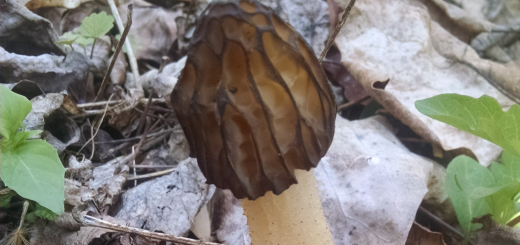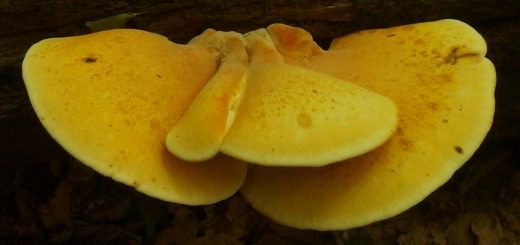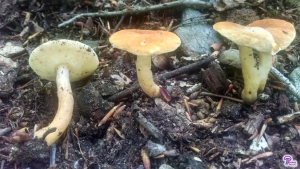#028: Mushroom Morphology: Boletes
The bolete morphology is one of two morphologies characterized by a hymenium (spore-bearing surface) covered with pores. Although boletes and polypores share this characteristic, the similarities end there. In fact, they look different enough for them to be commonly referred to by to different names. Boletes always share the following characteristics: the stipe (stalk) is central, the hymenium is on the underside of and is distinct from the pileus (cap), the pore surface easily separates from the pileus, the pore tubes are relatively long, and the flesh is fleshy to tough. From above, boletes tend to look a lot like agarics. However, bolete caps are often cracked or eaten away, making it possible for experienced mushroom hunters to tell boletes and agarics apart without picking them up. Most boletes are mycorrhizal with trees, so boletes are usually found growing on the ground around specific trees. Polypores never share all of these characteristics. The polypores with a central stipe (which is a fairly small group) have leathery flesh and short pore tubes that do not separate from the pileus. These also tend to be decomposers and are usually found growing on wood.
When identifying boletes, the first thing you should note is the type of tree your mushroom is growing near. While you may not end up needing this, you should make a note of it before you leave. Because many boletes only form mycorrhizae with a few tree species, this is often a useful identifying feature. Morphological features that can help you identify your bolete include: the color and texture of the stipe, any decorations on the stipe (reticulation, scabers, glandular dots), the color of mycelial threads at the base of the stipe, the presence of a partial veil, any bruising or discoloring on any part of the mushroom, the color and texture of the pileus, and the color, texture, and shape of the pore surface. Odor, taste, chemical reactions, spore print color and microscopic characters of the hymenium, pileus, and spores are also useful to note.
Unlike the agarics, all the boletes are found within a single order: the Boletales (which is placed in the phylum Basidiomycota). However, taxonomic simplicity ends there. Order Boletales has recently seen an explosion in the number of genera containing mushrooms with a bolete morphology. The result is that most morphological features no longer reflect any coherent grouping of genera. Despite the taxonomic confusion, sorting by morphological characteristics is still the best strategy for identifying boletes. It should be noted that not all organisms within the Boletales are boletes. Order Boletales also includes agarics and earthballs, among others.
See Further:
http://www.mushroomexpert.com/boletes.html
http://nature.berkeley.edu/brunslab/pmb113/lectures/10oct07_lecture.pdf
Keep up with FFF for more on types of boletes (to be developed)!









![#011: Characteristics of Kingdom Fungi [Archived]](https://www.fungusfactfriday.com/wp-content/themes/hueman/assets/front/img/thumb-small-empty.png)


6 Responses
[…] distinguished by a hymenium (spore-bearing surface) consisting of many, small pores. Unlike in boletes, the pore surface of the polypores cannot be easily separated from the rest of the mushroom. […]
[…] a bolete. This is evidenced by its pores, its central stipe, and its terrestrial habitat (see FFF#028 for more on boletes). The pores of the Old Man of the Woods are small (1-3 per millimeter) and […]
[…] Next story #028: Mushroom Morphology: Boletes […]
[…] Agaricales, but the Gomphidiaceae belong to the order Boletales. The Boletales contain the boletes (FFF#028), the earthballls, and a few lineages of gilled mushrooms.7 Within the Boletales, the Gomphidiaceae […]
[…] agarics belong to the order Agaricales. Gills also evolved in the orders Russulales, (see FFF#028), and Polyporales (see FFF#030), although these have not diversified nearly as much as the […]
[…] As mycologists narrowed the definition of Boletus (which now contains only certain boletes, see FFF#028), the Dryad’s Saddle was transferred to the genus Polyporus in 1821.6,13 Now, it’s being […]